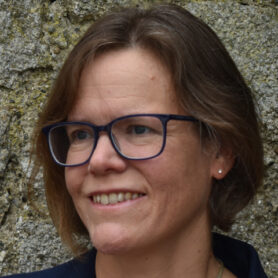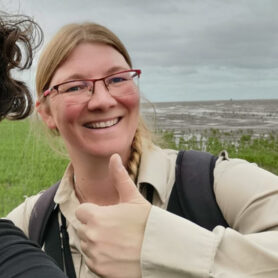The 6th Brunings Lecture “Futures of coastal marshes” was held on January 12, 2021. For those who missed it, or for those who’d like to attend it again: please watch the videos below.
Introduction by Prof. Maarten Kleinhans
Speakers
 Prof. Iris Möller , Trinity College Dublin – the international perspective. Prof. Möller is a coastal geomorphologist working on how physical and biological processes interact at the coast. She uses these insights to work with others on integrative solutions for flood protection, coastal erosion and seeks to take advantage of the many benefits healthy ecosystems have for humans.
Prof. Iris Möller , Trinity College Dublin – the international perspective. Prof. Möller is a coastal geomorphologist working on how physical and biological processes interact at the coast. She uses these insights to work with others on integrative solutions for flood protection, coastal erosion and seeks to take advantage of the many benefits healthy ecosystems have for humans.
Watch the lecture by Iris Möller: ‘Drie Vliegen in Een Klap’ – A vision for coasts that deliver biodiversity, carbon capture, and coastal protection
Arguably, a scientifically informed coastal management accompanied by coastal restoration efforts has never been more pressing. We know that sea level rise and extreme weather is perhaps easier to blame for the risks to which human populations will be exposed than the trends of intense coastal human development and a history of coastal (mis)management that we know together to also contribute to the 2-3 magnitude increase in coastal flood damages some expect by 2100 across the world.
We now have the science to know that coastal environments, such as coastal wetlands, are immensely important in the endeavour to create more resilient coasts with reduced flood and erosion risk, increased capture carbon, enhanced biodiversity, mental health and physical wellbeing, as well as commercial opportunities, particularly for agriculture and fisheries.
Iris’ talk will review, by way of a very personal research ‘story’, where we are in terms of our knowledge of flood and coastal erosion protection provided by coastal wetlands, what challenges we face in applying this knowledge, and how we might start to address those challenges. Anyone interested in achieving more sustainable and multifunctional coastal protection / risk reduction solutions should find this talk of interest.
 Dr Kelly Elschot (Wageningen University & Research) – focus on the Wadden Sea saltmarshes. Dr Elschot is an ecologist working on long-term development of saltmarshes, ecosystem functioning, carbon capture and nature-based solutions in the Wadden Sea and the southwestern sea arms.
Dr Kelly Elschot (Wageningen University & Research) – focus on the Wadden Sea saltmarshes. Dr Elschot is an ecologist working on long-term development of saltmarshes, ecosystem functioning, carbon capture and nature-based solutions in the Wadden Sea and the southwestern sea arms.
Watch the lecture by Kelly Elschot: Salt marshes in the Wadden Sea – past, present and future
Future enhanced sea-level rise poses an important risk for the Wadden Sea salt marshes and they need to accumulate enough sediment to keep up. However, not all marshes and marsh zones accrete similarly. In this presentation, we will discuss different marshes and what factors control local marsh accretion rates. To include a glimpse to the future, we will use a back-barrier marsh in the Netherlands with soil subsidence to mimic future accelerated sea-level rise and determine its impact on vegetation and marsh elevation.
 Prof. Piet Hoekstra (Utrecht University, Wadden Academy) works on systems understanding of biomorphodynamics and society in tidal systems in the Wadden Sea and the tropics. He will reflect on both talks and invite discussion.
Prof. Piet Hoekstra (Utrecht University, Wadden Academy) works on systems understanding of biomorphodynamics and society in tidal systems in the Wadden Sea and the tropics. He will reflect on both talks and invite discussion.
Watch the reflection and discussion by Piet Hoekstra:

